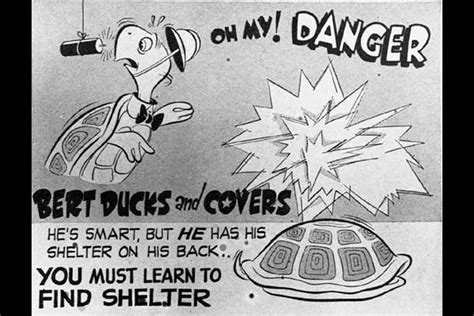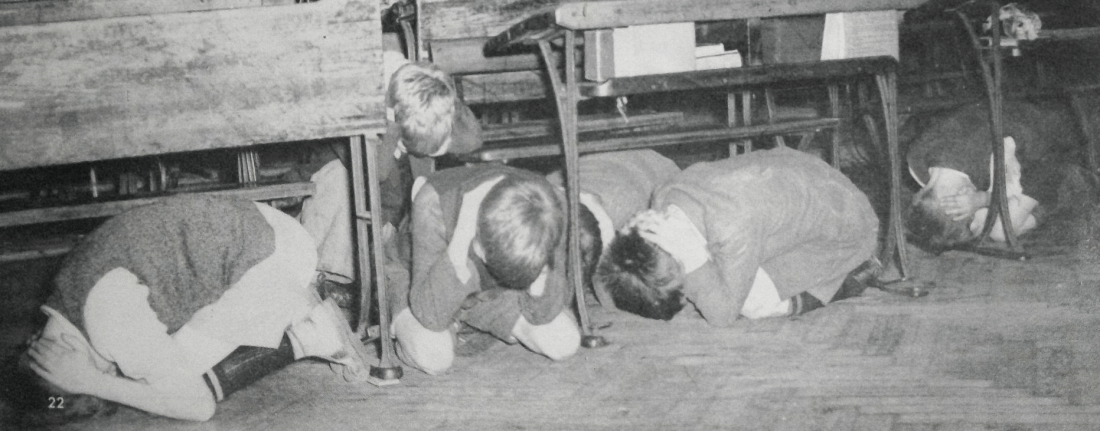
There are a few anniversaries of major historical events at this time of year. A couple of weeks ago we had the anniversary of humankind’s first landing on the Moon. That commemorated a momentous occasion. Speaking on CBS News, Robert Heinlein called the Moon Landing the “greatest event in all the history of the human race up to this time.” “This is New Year’s Day of the year one,” he continued; if we don’t change the calendar, certainly others in the future will change it for us. Heinlein saw in the Moon Landing the very survival of our species. “The descendants of all of us will be in colonies elsewhere, the human race will not die. Even if we spoil this planet, the human race will not die. It will go on and on and on…”
Even if we spoil this planet, the human race will not die. That’s a theme he returned to in his writing; it’s not true as of yet, but it may well be true in the future. It was a hopeful moment.

Yesterday was the anniversary of a less hopeful moment but one that probably had a far greater impact on day-to-day life in much of the world. Not the dawn of the Atomic Age precisely, but it was the day that the world at large learned that the Atomic Age had begun. It’s likely the reason that the survival of the human race was foremost on Heinlein’s mind mere moments before Armstrong took his first step onto the Lunar Surface. August 6th is the day the United States dropped the Atomic Bomb on Hiroshima.
It’s hard to overstate the changes that came about as a result of the Atomic Age. The Soviet Union detonated its own “device” on 29 August 1949. The Cold War followed, as did nuclear proliferation, civil defense drills, duck and cover, the red scare, proxy wars, and fall-out shelters.
Asimov’s Foundation is one of those Science Fiction series that, as much as anything else, deals with the long sweep of history. While we were preparing for our next episode of The Stars End Podcast we realized that the story for the episode appeared in the first issue of Astounding that was published after that initial atomic bomb and John W. Campbell dedicated his monthly editorial to the event and we chat about it a bit on the podcast. It’s not every day that you run across a primary source of this salience.
Why? Well as Campbell points out, unlike the general public who were learning about nuclear energy for the first time, the SF community had been thinking about it for years. It’s a major plot point throughout the Foundation series for example; Asimov uses it as a metaphor for modernity. Campbell mentions three short stories specifically, two by Heinlein and one by Lester Del Rey. All three of these stories were published in Astounding, “Blowups Happen” in 1940, “Solution Unsatisfactory” in 1941, and “Nerves” in 1942. All three were prescient. “Blowups Happen” and “Nerves” foresaw the possibility of incidents like Three Mile Island, Chernobyl, and Fukushima while “Solution Unsatisfactory” preconfigured the debate about the United Nations’ role in preventing this use of Nuclear Weapons.
Here’s the editorial in its entirety. This issue went on sale on 16 October 1945, so I’d guess this was written in mid to late August. It’s a fascinating read, mixing common-sense proposals with a realistic fatalism about what’s possible before the people are ready for it. It reminds me of the debates about taking COVID precautions vs. reopening the economy and it reminds me of the Rolling Stones’ Street Fighting Man. “For where I live the game to play is compromise solution… well now, what can a poor boy do, ‘cept to sing in a rock-n-roll band?”
The Atomic Age
by John W. Campbell, Astounding Science Fiction, November 1945
There’s a considerable lapse between the time Astounding goes through make-up and the time it appears on the newsstands, as you are well aware. We are not, nor have we tried to be, a news magazine. This time it made a difference, of course; not knowing beforehand when the news would be released made us a little behind the times for a change.
The atomic bomb fell, and the war was, of course, ended. During the weeks immediately following that first atomic bomb, the sciencefictioneers were suddenly recognized by their neighbors as not quite such wild-eyed dreamers as they had been thought, and in many soul-satisfying cases became the neighborhood experts.-Perhaps they’ve been able to do some good — give the people near them, who had no intellectual forewarning of what was coming, some idea of what it means. I recommend, as most salutary little lessons, the stories “Nerves”, “Blowups Happen” and “Solution Unsatisfactory” — particularly the latter. It is of some interest that, at the moment, there is considerable agitation toward the idea of a world peace force, a United Nations set-up, using the atomic bomb as a weapon to enforce peace. The precise proposal made by “Solution Unsatisfactory”.
It might work as a stopgap, and, at the moment, all we can hope for is a stopgap. The troubles to come have their roots in two factors, factors already quite evident in the world today.
People do not realize civilization, the civilization we have been born into, lived in, and been indoctrinated with, died on July 16, 1945, and that the Death Notice was published to the world on August 6, 1945.
The second factor is this: it is a basic characteristic of people that they refuse to accept change when it arrives.
On that latter point, which is, of course the most important, you can readily observe by the various newspapers and magazines that the Socialists go on being socialists, and see in the atomic bomb and its consequences the opportunity to spread and enforce socialism. The Communists see in it the final proof of the necessity of being communist. The Anarchists naturally see it as the perfect way of obtaining the annihilation of all government. And, of course, the reactionary sees it as the way we can finally teach those blasted revolutionaries to behave themselves.
People simply go on trying to be just what they were before, with the same old viewpoints, the same demands, the same prejudices and intolerances. Each sees the atomic bomb only as a way of enforcing more violently his own particular will.
The natural result is that they are trying very hard to patch up the old civilization. It won’t work, of course. The chicken has been beheaded; it still runs squawking across the world, acting very much alive, and not yet knowing it is dead. But you can’t sew the head back on, no matter how hard you try. You can’t simply outlaw the atomic bomb, and expect, thus, to thrust it back into the limbo of undiscovered things.
Civilization — the civilization of Big Power balances, of war and peace and bad international manners, of intolerance and hates, of grinding poverty and useless luxury — is dead. We are in the interregnum now, the chaos of moving our effects, our ideas and our hopes from a blasted edifice into a new structure. If we can make it in one move, we are an extremely wise, sane, and fortunate race. Probably we will require about three to six moves, from one unusable structure of world order to another before we find one that can work.
Each time we move — as in moving from one house to another — we will leave behind a few more things that we find we don’t need, can’t use, or were even responsible for the ills we knew in the old place.
The interregnum is beginning now, and we do not have a Hari Seldon to predict the ways in which sociopolitical psychology will work out. What structure the new culture will have, we can’t imagine, because we know too little of what atomic powers can be made to do. It’s conceivable that we might discover, in a period of a few brief weeks, the secret of the force-wall — something that can establish an absolutely impenetrable barrier. In that case, rather minor modifications of our culture would be possible.
If we do not — and I do not expect it — cities are impossible. At least until such time as the human race has learned to get along without intolerance, without hatred, and without their inevitable concomitant — vigorous, even violent, proselytizing.
What the world most needs is a breathing spell long enough to permit the peoples of the world to absorb the basic facts that we of science-fiction have at least a fair appreciation of. Too many people see the atomic bomb as simply a Bigger and Better, New-Type Bomb. There is only one appropriate name for the atomic weapon: The Doomsday Bomb. Nothing known to man can stand against its power. Some writers have proposed that this will mean “cities of the future, if they are to be safe, must be underground” — which is sheer balderdash. It’s a perfect acknowledgment that the writer doesn’t even vaguely know the score. The man who says any such thing is blatantly admitting that he believes that mere mechanical strength of material can defeat the power of the atomic bomb.
Of course, part of the reason for that misapprehension is that the bombs dropped on Hiroshima and Nagasaki were the first ever made. They were the weakest, crudest, least effective atomic weapons that will ever be used. Those who have followed the discussions of atomic power and atomic weapons in Astounding will certainly recognize that the United States Army, in applying its available atomic arsenal to the purpose of forcing the Japanese to defeat, consciously and carefully selected the least damaging, gentlest application of the terrible agency at their disposal. Then that manifestation of the weapon — the simple energy bomb — was applied in the least damaging possible manner; it was set off in the air, not on the ground.
Talk of cities safe underground is nonsense for the very simple reason that atomic powers are such that, if the rock is solid enough to resist the titanic blow of atomic detonation, the delicate isostatic balance of the Earth’s crust can always be upset. If the city can’t be reached directly, it can be destroyed by earthquakes.
Personally, I’d prefer being above ground, a long, long way from any target of sufficient concentrated value to merit the attention of the atomic bomber.
Everyone knows that the first atomic bomb was the death of the city of Hiroshima.
It would probably save a lot of lives if they would recognize that it was, equally, the death of every big city, the death of an era, and the death of a cultural pattern based on a balance of military power, controlled exclusively by big and wealthy nations.
Atomic war is as suicidal as a duel between two men armed with flame-throwers in a vestibule. Neither party can have the slightest hope of surviving.
The atomic weapon is, to nations, what the revolver was to the men of the old West — the Equalizer. It didn’t make any difference how big you were; the gun makes all men the same size. The atomic bomb makes all nations the same size.
And, just as the revolver produced an era of good manners or sudden death, the atomic bomb must, inevitably, force upon us an era of international good manners and tolerance — or vast and sudden death.
When the peoples of the world fully — both intellectually and emotionally — realize that, we may get somewhere.
THE EDITOR
You can find all episodes of our podcast here.



